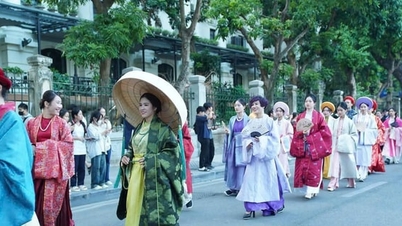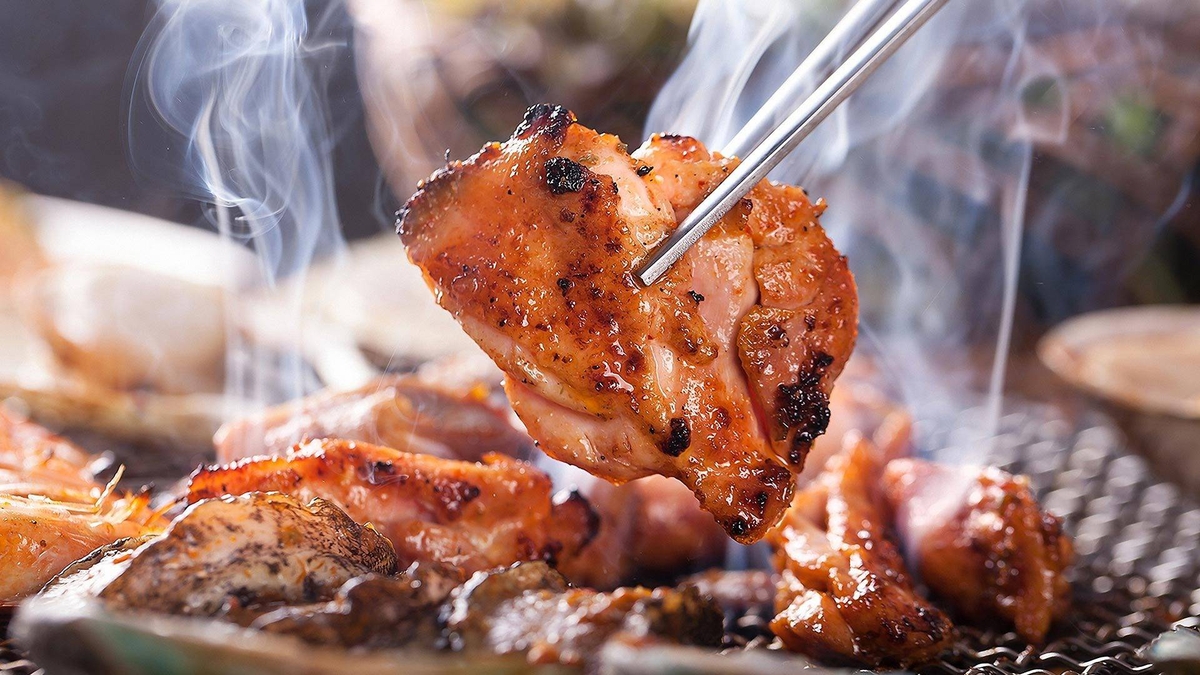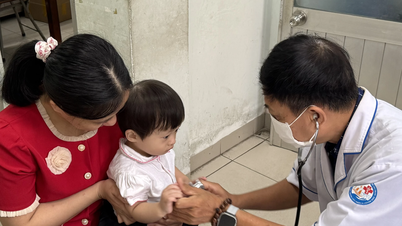
Living heritage in the community flow
Writer Nam Cao, real name Tran Huu Tri, was born on October 29, 1915 in Dai Hoang village, Cao Da commune, Ly Nhan district (now Nam Ly commune, Ninh Binh province). He is considered a great writer, the most outstanding and typical representative of modern Vietnamese literature. With many different pen names such as: Thuy Ru, Nhieu Khe, Xuan Du, he left the country's literature with excellent works such as: Doi hai danh doi, Doi mat, Song mon, Doi cho, Cai lo giay..., expressing profound ideological content, noble humanitarian spirit and unique writing style. Many of his works have been translated into many languages around the world .
During the resistance war against the French, he became a soldier on the Party's cultural and ideological front and made great contributions to the cause of revolutionary journalism in Vietnam. He died on November 30, 1951, while on his way to campaign for agricultural tax in Muu Giap field, Gia Vien district, Ninh Binh province. During his career, he was awarded many noble titles and prizes by the Party and the State, such as: First Class Resistance War Medal against the French, Ho Chi Minh Prize for Literature and Arts, Phase I (1996), and posthumously awarded the title of March Revolutionary Veteran in 2011.

The Memorial Area for Writer and Martyr Nam Cao was built in 2004 in his hometown - Dai Hoang village (now Nhan Hau village, Nam Ly commune) with a total area of 5,460m2. This is not only a worship space but also a display area with great significance in propagating and educating the tradition of patriotism and revolution for generations of people, especially the young generation. The exhibition content is scientifically organized, including main areas such as: Memorial center; Homeland and family; Life and career; Finding Nam Cao; and activities to honor writer Nam Cao. This demonstrates the morality of drinking water, remembering its source, showing gratitude and remembrance to the outstanding son of the local Party Committee, Government and People.
The value of heritage lies not only in the exhibits on display but also in the way it is continued in the souls of the young generation through practical actions. For many years, teachers and students of Hoa Hau Secondary School (Nam Ly Commune) have shouldered the sacred task of caring for and protecting the Memorial Site. Every week, small tasks such as sweeping, taking care of trees or pulling weeds become a lively moral lesson for students. The students themselves find it an honor to contribute to protecting a cultural work and are proud to be born in the homeland of the famous author "Chi Pheo". Moreover, the school has actively developed a plan to incorporate content about the life and career of writer Nam Cao into the main and extracurricular curriculum, turning the Memorial Site into a truly attractive local cultural education space.

Teacher Tran Huu Than, Principal of Hoa Hau Secondary School, shared about the school's educational orientation: "We always instruct teachers to integrate lessons about writer Nam Cao in their lessons. The purpose is to help students better understand the value of literature, the human condition and above all, to help them love and be more proud of their homeland."
Thanks to that deep connection, students feel a strong connection with the heritage. Tran Khanh Bang, a student at Hoa Hau Secondary School, expressed his pride: “I am very proud of the homeland where the great writer was born. His works not only help me understand history but also greatly inspire me in my studies and training.”
According to statistics, each year the Nam Cao Memorial Area welcomes about 2,500 to 3,000 visitors, mainly students, demonstrating the heritage's role as an extracurricular educational center. Moreover, local people also actively participate in spreading this cultural value. Mr. Tran Huu Vinh, Nam Ly Commune Veterans Association, said: "When tourists and students come here, we all enthusiastically introduce the biography of the late writer. This helps visitors understand more deeply, thereby spreading more strongly the precious cultural values of our homeland."
Turning literary works into attractive tourism products
Nam Cao's hometown, the fertile land of Dai Hoang - the birthplace and nurturer of the immortal literary image "Vu Dai Village", is not only a cultural destination but also a door opening to an attractive and meaningful community tourism experience. Visitors come here not only to offer incense in gratitude or conduct academic research activities, but also to immerse themselves in the authentic Northern countryside style. This is a real-life space, with ancient roofs, especially Ba Kien's house which is over 100 years old and still retains its ancient architectural features, along with winding village roads and vast fields, strongly reminding of the social context and human fate in Nam Cao's works. "Stepping out of the book pages" to feel the atmosphere of the place that created Chi Pheo and Lao Hac is a very unique experience.

The depth of the experience is also enhanced through the culinary and craft village channels. The specialties here are not simply dishes but have become regional brands certified to meet OCOP product standards, demonstrating quality and economic value. For example, Dai Hoang Royal Banana - a type of banana that was once offered to the king thanks to its special flavor; or Nhan Hau Village Braised Fish with rich flavor, associated with the image of hard-working, skillful women of the countryside. These products are the culinary bridge that brings tourists closer to indigenous culture, feeling the quintessence in the material life of the people.
Ms. Nguyen Thi Van Quynh, a tourist from Hanoi commented: “Not only is this a memorial site, this area also opens up very attractive experiences. Visiting Ba Kien’s house, enjoying fragrant braised fish, immersing yourself in the peaceful countryside scenery, feels like you are stepping into the very scene that Nam Cao described in his work.”

In the new context, when the three provinces of Ha Nam, Nam Dinh, and Ninh Binh have merged into one, the Nam Cao Memorial Site has a great opportunity to connect with many other cultural heritage tourism routes. The journey of tourists to find the great writer Nam Cao can be seamlessly connected with famous landscapes such as Trang An and Hoa Lu, creating a unique "Cultural - Natural Heritage Journey", attracting domestic and foreign visitors to visit more frequently.
To achieve this goal, local authorities and relevant departments and branches need to soon have a long-term and systematic strategy to promote tourism types that exploit the literary values of Nam Cao’s homeland. This requires synchronous investment in planning, infrastructure, and in-depth training of tourism human resources.
Only when we know how to effectively exploit Nam Cao's plot, characters and spirit and integrate them into culinary and craft village experiences, will his hometown truly become a unique cultural tourism brand and a lever for sustainable local economic development.
Source: https://ninhbinh.gov.vn/van-hoa-xa-hoi/phat-huy-gia-tri-di-san-nam-cao-mo-huong-du-lich-van-hoa-doc-dao-359205



![[Photo] Prime Minister Pham Minh Chinh chairs a meeting on housing policy and the real estate market.](https://vphoto.vietnam.vn/thumb/1200x675/vietnam/resource/IMAGE/2025/11/11/1762838719858_dsc-2107-jpg.webp)


![[Photo] Chu Noodles - the essence of rice and sunshine](https://vphoto.vietnam.vn/thumb/1200x675/vietnam/resource/IMAGE/2025/11/11/1762846220477_ndo_tl_7-jpg.webp)






















































































![Dong Nai OCOP transformation: [Article 4] Reaching national standard products](https://vphoto.vietnam.vn/thumb/402x226/vietnam/resource/IMAGE/2025/11/11/1762825820379_4702-cac-san-pham-trai-cay-chung-nhan-ocop-nongnghiep-174649.jpeg)



![Dong Nai OCOP transition: [Article 3] Linking tourism with OCOP product consumption](https://vphoto.vietnam.vn/thumb/402x226/vietnam/resource/IMAGE/2025/11/10/1762739199309_1324-2740-7_n-162543_981.jpeg)






Comment (0)